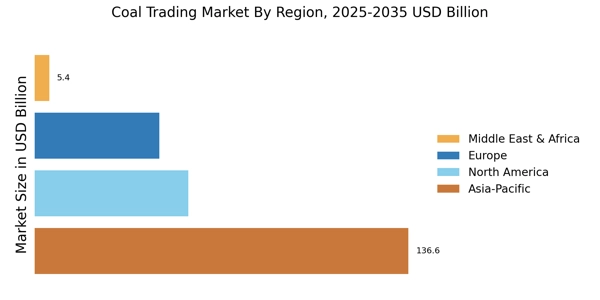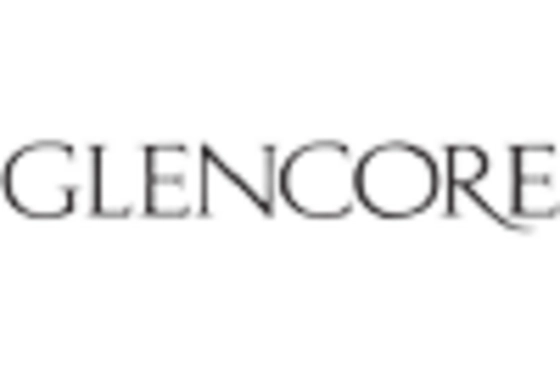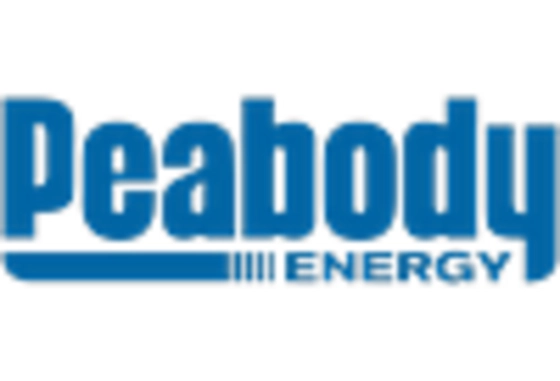Regulatory Frameworks and Policies
The regulatory frameworks and policies governing the Coal Trading Market play a pivotal role in shaping market dynamics. Governments across various regions implement regulations that can either promote or hinder coal trading activities. For instance, stricter emissions standards may compel coal producers to adopt cleaner technologies, thereby influencing trading patterns. In 2025, the implementation of carbon pricing mechanisms in several countries is expected to impact coal demand, as industries seek to minimize costs associated with carbon emissions. This regulatory landscape creates a complex environment for stakeholders in the Coal Trading Market, as they must navigate compliance while striving for profitability. Furthermore, the alignment of national policies with international climate agreements may lead to shifts in coal trading volumes, as countries adjust their energy portfolios to meet sustainability targets.
Economic Growth and Industrial Demand
Economic growth remains a fundamental driver of the Coal Trading Market, as increased industrial activity typically correlates with heightened demand for coal. In 2025, emerging economies are projected to experience robust growth, particularly in sectors such as steel production and power generation, which are heavily reliant on coal. For instance, the International Energy Agency indicates that coal consumption in Asia is likely to rise, driven by infrastructure development and urbanization. This surge in demand presents opportunities for coal traders to expand their operations and optimize supply chains. However, fluctuations in The Coal Trading Market, necessitating strategic planning and risk management for participants in the Coal Trading Market.
Geopolitical Factors and Trade Relations
Geopolitical factors significantly impact the Coal Trading Market, as trade relations between countries can influence coal supply and demand dynamics. In 2025, ongoing tensions in certain regions may lead to shifts in coal trading patterns, as countries seek to secure energy resources amidst fluctuating political landscapes. For example, sanctions or trade agreements can alter the flow of coal between nations, affecting pricing and availability. Additionally, the strategic importance of coal in energy security discussions may prompt countries to diversify their sources, further complicating the trading environment. Stakeholders in the Coal Trading Market must remain vigilant to these geopolitical developments, as they can create both challenges and opportunities for market participants.
Technological Advancements in Coal Processing
Technological advancements in coal processing and utilization are transforming the Coal Trading Market by enhancing efficiency and reducing environmental impact. Innovations such as carbon capture and storage (CCS) technologies are gaining traction, allowing for cleaner coal usage and potentially increasing its marketability. In 2025, the adoption of these technologies is expected to influence trading dynamics, as countries with advanced coal processing capabilities may gain a competitive edge. Additionally, improvements in transportation and logistics technologies are streamlining coal supply chains, reducing costs, and facilitating international trade. As these advancements continue to evolve, they may reshape the landscape of the Coal Trading Market, enabling traders to respond more effectively to market demands and regulatory pressures.
Environmental Concerns and Sustainability Initiatives
Environmental concerns and sustainability initiatives are increasingly shaping the Coal Trading Market, as stakeholders respond to growing public and governmental pressure to reduce carbon footprints. In 2025, the emphasis on sustainable practices is likely to intensify, with many companies adopting greener strategies to align with global climate goals. This shift may lead to a decline in coal demand in certain regions, particularly where renewable energy sources are prioritized. However, it also presents opportunities for innovation in cleaner coal technologies and alternative energy solutions. The Coal Trading Market must adapt to these changing expectations, as companies that proactively engage in sustainability initiatives may enhance their market position and appeal to environmentally conscious consumers.


















Leave a Comment